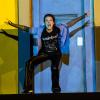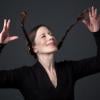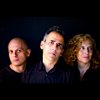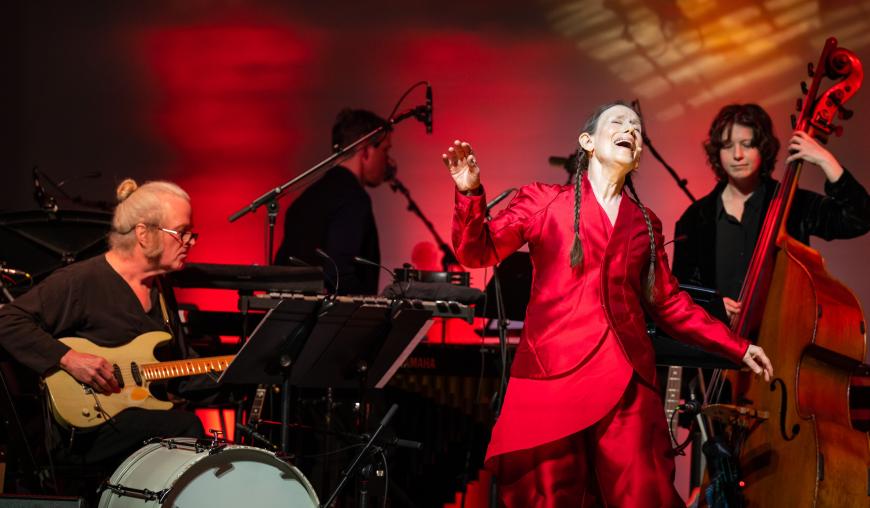
On a backyard restaurant patio in Red Hook, a post-industrial corner of coastal Brooklyn with great vibes and dismal transit, I waited for the opening to stalwart new-music organization Bang on a Can’s Long Play festival (May 5–7).
Long Play is a watch-until-you-drop weekend of new music’s best and brightest, an apt expansion on the 12-hour marathon events Bang on a Can once furnished annually. You have to have a plan to see it. Having formulated mine, I rounded the corner to Pioneer Works, Red Hook’s destination iron plant-turned-concert venue.
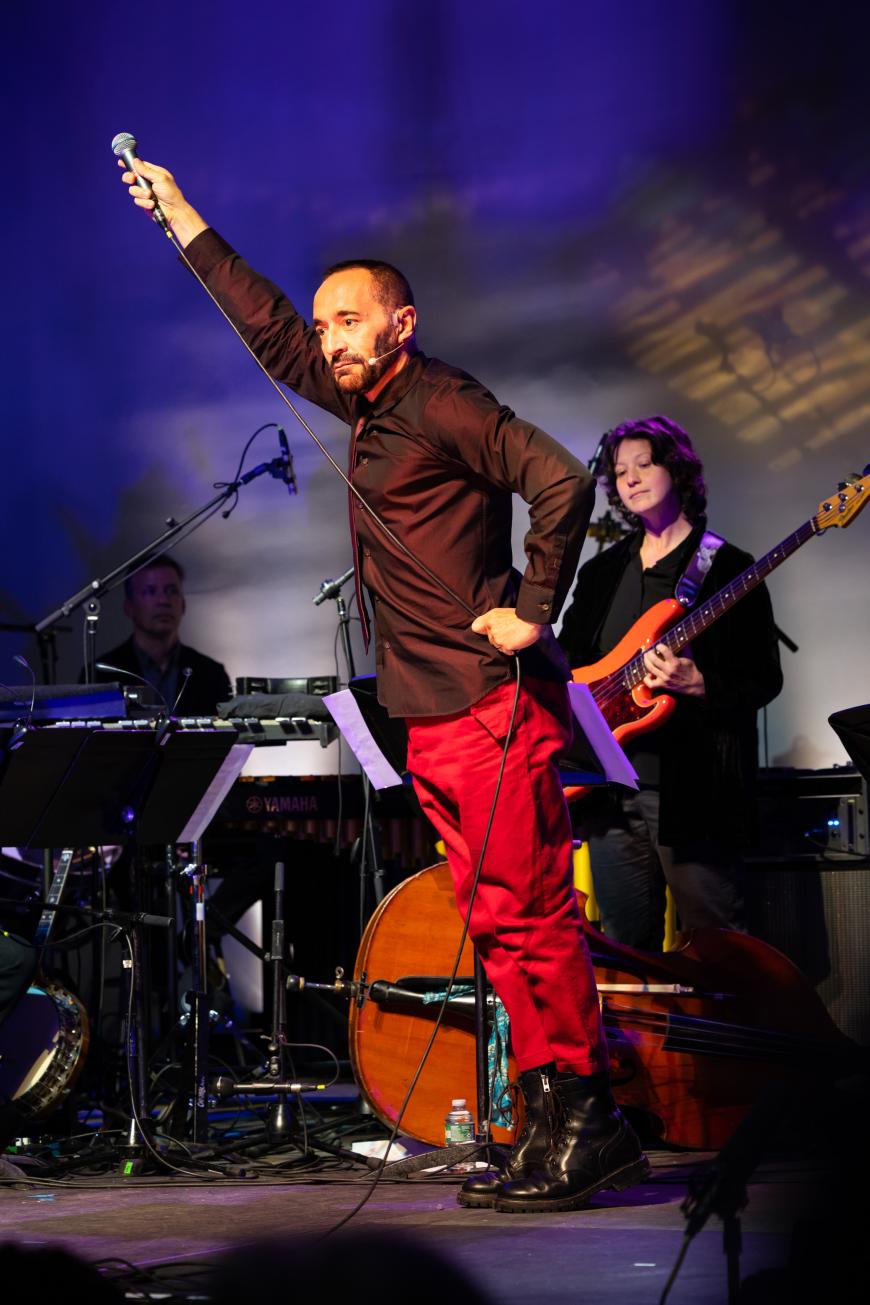
To start the weekend, the cavernous brick building hosted an 80th-birthday concert for the trailblazing vocalist-composer Meredith Monk, co-presented with Manhattan’s Times Square-adjacent Town Hall. Monk appeared with a trio of regular vocalist collaborators and Bang on a Can’s in-house chamber sextet, the Bang on a Can All-Stars, to perform music from the 2020 album Memory Game. For the many elder Monk-heads in the audience, it was a return to the counterculture of their younger days; for the 20-something crowd, it was a rare dive into the ancestry of our modern-day favorites.
The look back was weird at times, though the performances were fantastic. Monk’s voice is a touch less limber than earlier in her career, but it’s lost nothing in interpretive power. In excerpts from The Games, a 1984 work infused with the excitement of the Olympics and the threat of missiles pointed from East Berlin to West, she switched between martial seriousness, bewildered pathos, and nasality that was at once menacing and comical. Her minimalist ostinatos grooved hard in the hands of the All-Stars, who all bobbed vigorously to the beat.
There is no “and company” like Monk and company. In the “Gamemaster’s Song,” Theo Bleckmann performed a five-minute routine of dance steps that channeled both a robot and a toy soldier, all the while emitting anything-but-sung vocalisms. Kate Geissinger showed off her crystalline timbre with a vocalise that soared over uneven pulses of a five-beat waltz. And Allison Sniffin emitted the most impressive vocalizations of the night, technically perfect calls of a hypothetical half-bird, half-ape creature.
Yet there were times when the whole performance felt farcical, almost like an absurdist version of a children’s TV show. The audience laughed at some of the vocal ensemble’s sillier movements — side-to-side head bounces, rolling fists a la Saturday Night Fever, and an arm motion that looked suspiciously like a dab — though it wasn’t clear if comedy was the point. In the Monk ensemble’s early days (the late 1970s), those movements were among the seeds of subversion, bucking academic avant-gardism. Today, they’re dated, and The Games, like other Monk compositions, struggles to be relevant. But then, couldn’t one say the same for other popular historical-revolution pieces (Beethoven’s “Eroica” pops to mind)?
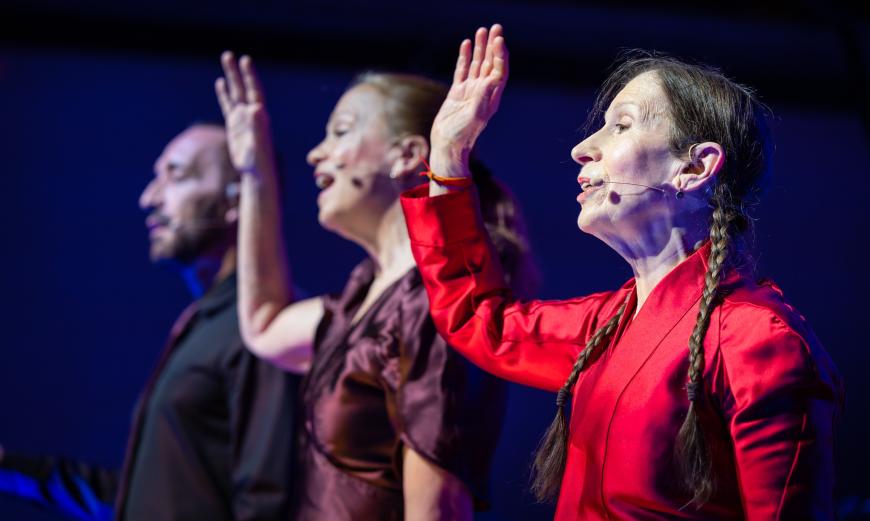
Today’s critical eye, too, calls some of Monk’s practices into question. She often writes lyrics in some constructed language of unclear inspiration, very recognizably “foreign.” From whom is she borrowing — or taking? Especially as the entire company (instrumentalists and vocalists both) bellowed “PAHN-DA” throughout one of The Games’ “Panda Chants,” something didn’t sit quite right. That chant may have been a ritual Monk wrote, but it also felt like one she may not have had the right to create, at least not without acknowledgement.
This is not an indictment per se — if early-music performers can cling to Carlo Gesualdo and opera fans can defend Richard Wagner, then Monk’s foreign-ese can certainly slide. But everything comes in its context, and it’s all we can do to recognize the triumphs and faults of history’s monuments through our modern lens.
Though this year’s opening and closing events took place at the supremely inconvenient Pioneer Works, most of Long Play centers itself in Downtown Brooklyn, often mere steps from the Brooklyn Nets’ native Barclays Center. The festival occupied seven venues in the bustling neighborhood, and there was always music somewhere.
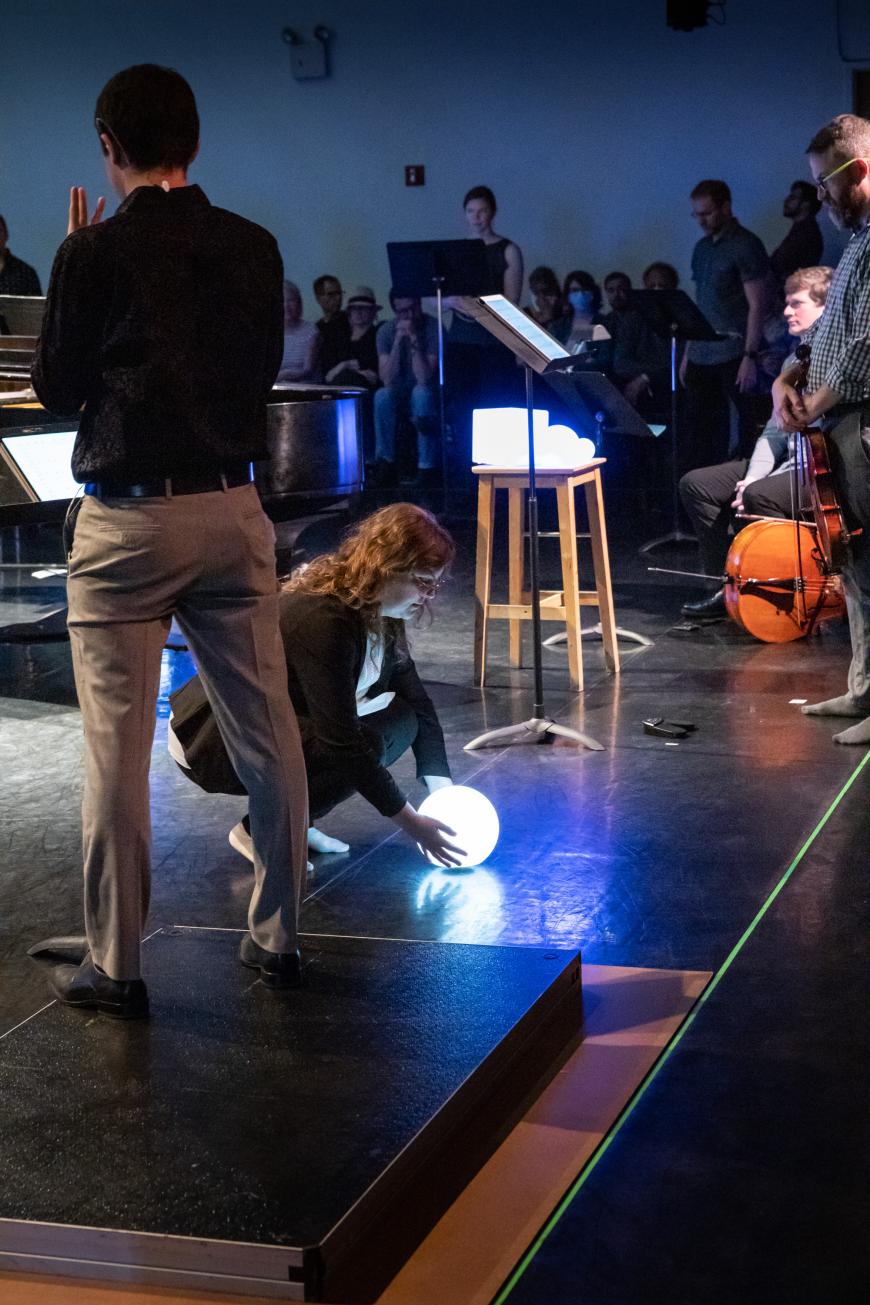
The first notes Saturday came from the Mark Morris Dance Center’s fifth-floor black box theater, where Alarm Will Sound presented now-Pulitzer-finalist Tyshawn Sorey’s panegyric to legendary composer, improviser, and computer-music pioneer George Lewis. The influence of Morton Feldman’s placid experimentalism runs deep in Sorey’s music, even divorced from the post-Rothko Chapel success he enjoyed earlier this season. As the large chamber ensemble stacked into gauzy chords, it still felt as if the music derived its vivid colors from each individual note. Not a rousing start, but pretty.
My friend and I bolted as soon as conductor Peter Ferry lowered his hands in order to arrive at Public Records, the restaurant-bar-venue whose underground Sound Room played host to an afternoon-long artist showcase from the indie record label greyfade.
We entered to the microtones of Catherine Lamb’s Prisma Interius VII as rendered with care by the JACK Quartet, among the finest new-music groups on earth. Where Lamb took a magnifying glass to the behaviors of individual notes, JACK violinist Christopher Otto explored the chord as a discrete structure in his own triple-quartet rag’sma (the performers had all recorded two parts ahead of time). And never have white-noise crunch-slides harmonized more sonorously than in the Quartet’s version of Iannis Xenakis’s Tetras.
Next, we made our way up the steep hill of Fort Greene Park. Atop the former Revolutionary War lookout point, a battery of gongs, metal sheets, drums, and more lay in preparation for Michael Gordon’s spatial Field of Vision, written for (and performed by) 36 percussionists of the University of Michigan Percussion Ensemble. It was the only outdoor performance of the festival, and there was a vague air of marching band — not in any degree of militaristic synchrony but in the cadence of the players’ movements across the makeshift stage.
Afterward, we retreated back to Mark Morris for a fabulous set by bassist-improviser Brandon Lopez and poet-scholar Fred Moten. Moten’s deep, gravelly voice both anchored and rose above Lopez’s two-hand pizzicato polyphony. Of all the weekend’s music, this had the most earnest, gut-punching gravitas — just like the duo’s 2022 album with drummer Gerald Cleaver.
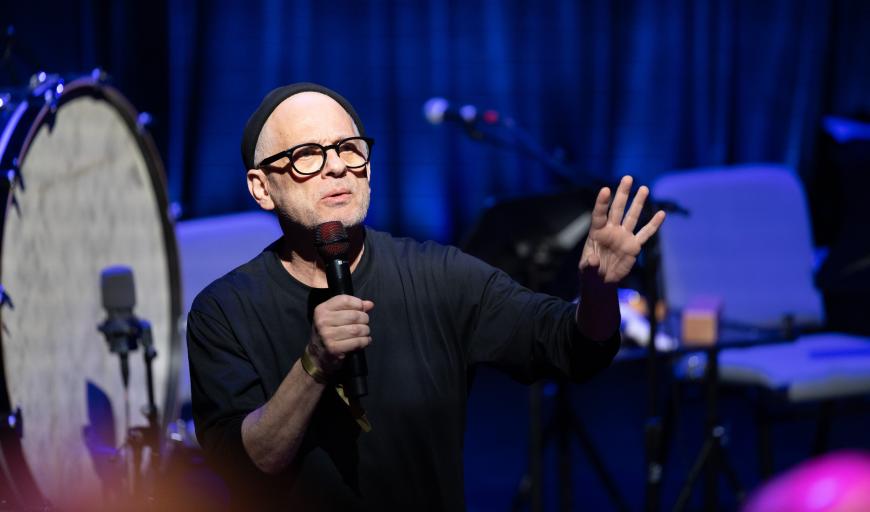
Zipping to the opposite end of the spectrum, we took in David Lang’s entrancing love fail, a loose retelling of Tristan and Isolde’s ill-fated romance. True to form, it’s a score whose fierce difficulty lies in pinpoint repetition — how many times in a row can one realistically nail a nearly-octave jump in a pianissimo? For Quince Ensemble’s Carrie Henneman Shaw and Amanda DeBoer Bartlett, the answer was many.
For the second year in a row, Long Play coincided with New York City’s first truly warm weekend of spring, so on Sunday, we paused for a few minutes for a bite and a soak in the sun, happening upon an unrelated pop-up performance by a well-choreographed band of marching electric guitarists — only in Brooklyn!
A few minutes later (and a block due north), the piano-percussion quartet Yarn/Wire began its performance of Annea Lockwood’s Into the Vanishing Point, a work that evokes the sounds of the world’s collapsing insect populations. Like much of the music in Yarn/Wire’s repertoire, the sounds at times teetered on unpleasant — the intense clack of hard mallets on high crotales, the whinny of a bass bow on a tam-tam’s edge, and the grating whirr of guitar slides on piano strings — but that felt purposeful, almost a penance for the human-borne environmental disaster Lockwood portrays.
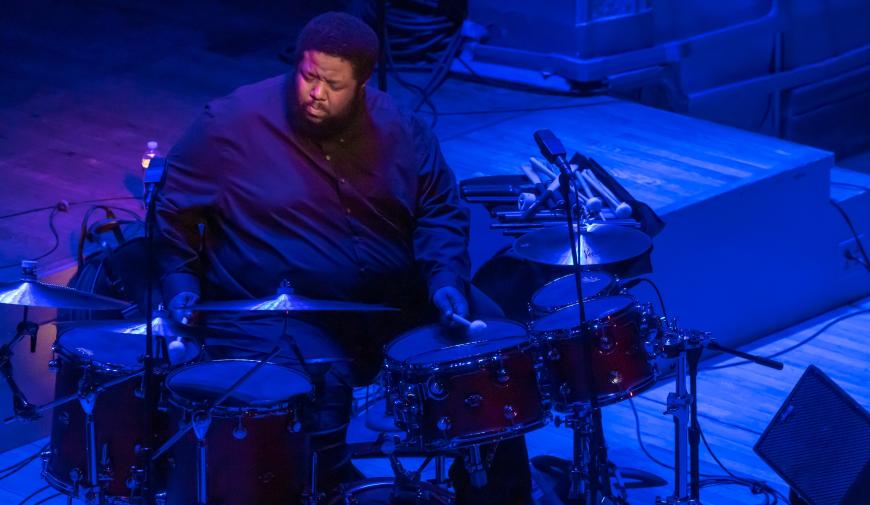
Tyshawn Sorey showed up to play music by Morton Feldman. Time slowed down for the 90-minute performance of Feldman’s Triadic Memories, driven with peaceful ease by pianist Conrad Tao, and I felt every second of it. Tao played the piece with the exacting stillness that marks Feldman’s sound, no surges of energy perturbing the work’s meditative facade. On top, Sorey improvised atmospheric drum accents, his accuracy (and lack of score) showing the depth with which he’d studied the work. It was among the most punishing performances of the weekend — and the most beautiful.
By the time Sorey and Tao finished, the line to see Henry Threadgill’s Very Very Circus stretched down the block, dashing our plans. Threadgill’s popularity turned out to be a blessing in disguise — instead we saw a set by percussionist Susie Ibarra and pianist Alex Peh.
Halfway through the show, Peh played U Thet Oo’s Padethar Thin Zin, an unprecedented stateside glimpse into the traditional Burmese genre of Sandaya piano. Peh, who recently concluded a Fulbright residency in Bangkok to study with Sandaya’s leading proponent, explained that an Italian ambassador gifted a piano to a late-19th-century Burmese king, who tasked his court percussionists with figuring out the instrument’s place in their royal drum-and-gong ensembles. An entirely new technique emerged, largely disconnected from Western piano pedagogy. The music, which Peh learned entirely by ear (and largely over Zoom), was fascinating, almost fully pentatonic and full of shimmering ripples up and down the instrument. This was certainly the hidden gem of the festival.
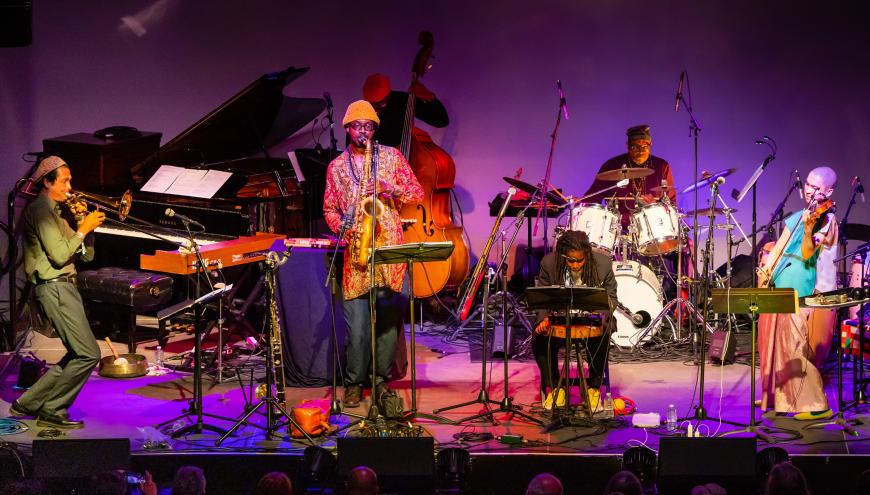
For the weekend’s big finale, we hiked back to where we had started: Pioneer Works in Red Hook. The Art Ensemble of Chicago brought unparalleled energy to the former ironworks, despite the fact that its leader, Roscoe Mitchell, had to bow out due to COVID. Ritual marked the performance from the moment the players began to process onstage, led by longtime drummer Famoudou Don Moye. Between communal chants punctuated with traditional African instruments, the sextet broke into stretches of swing that thrived on vibes. There was no “in tune” or “in the pocket” — just feeling, impulse, drive.
Among the Art Ensemble’s fabulous soloists was violinist Eddy Kwon — her improvisations always knew exactly where they were going and how to get there. Pianist/trombonist Simon Sieger attuned his style closely to his colleagues, shifting suddenly from extended classicism to angular clusters to straight-ahead swing. And one extended solo by British saxophonist Shabaka Hutchings (who was tapped as Mitchell’s last-minute replacement) alone justified the long trek. Hutchings took a core four-note module and bent, warped, and modified it to the extent that it eventually just splintered. Even the band seemed stunned.
After multiple encores, and a full weekend, so were we.


